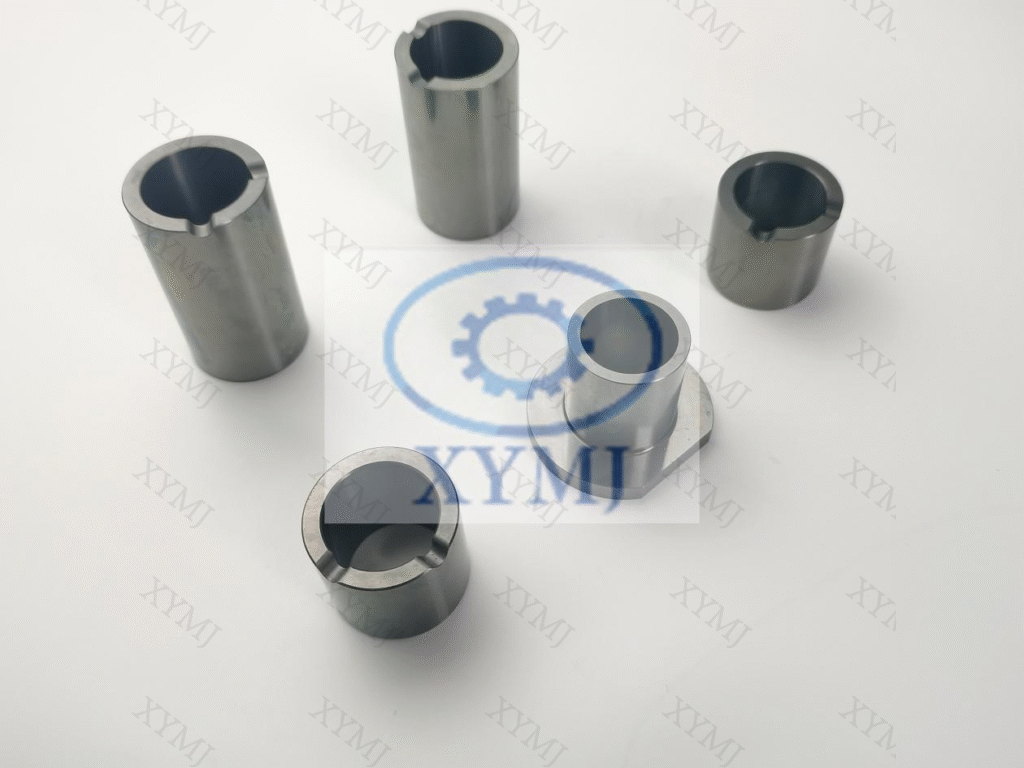Grinding Carbide
To enhance the appearance of machined cemented carbide products, surface polishing is often necessary. Polishing removes imperfections, scratches, and abrasion marks left from previous processes, resulting in a smooth surface and improved wear and corrosion resistance.
Because cemented carbide has high hardness, ordinary metallographic sandpaper cannot be used; diamond abrasive must be used. Our common method is to use a diamond grinding wheel machine. Diamond grinding wheels offer unique advantages when grinding cemented carbide and non-metallic materials. They maintain good shape retention, producing highly precise workpieces. The numerous pores within the wheel facilitate chip removal and heat dissipation during grinding, reducing the risk of clogging and workpiece burns. Furthermore, the self-sharpening properties of diamond grinding wheels make dressing easier when grinding cemented carbide.
In short, diamond grinding wheels, with their high hardness, high compressive strength, and excellent wear resistance, are ideal tools for grinding cemented carbide. However, the effect of diamond wheels is not significant when grinding steel, especially special steels. It is best suited for machining hard-to-grind steels with high hardness, high viscosity, high high-temperature strength, and low thermal conductivity, as well as high-speed or ultra-high-speed grinding. Its application range complements that of synthetic diamond.
Diamond wheels have sharper cutting edges, lower wear, longer lifespan, higher productivity, and better machining quality than wheels made with common abrasive grains such as boron carbide, silicon carbide, and corundum. However, they are expensive and more suitable for precision grinding of high-hardness, brittle, and difficult-to-machine materials such as cemented carbide, ceramics, and semiconductors.
Diamond wheels have sharper cutting edges, lower wear, longer lifespan, higher productivity, and better machining quality than wheels made with common abrasive grains such as boron carbide, silicon carbide, and corundum. However, they are expensive and therefore more suitable for precision grinding of high-hardness, brittle, and difficult-to-machine materials such as cemented carbide, ceramics, and semiconductors.

